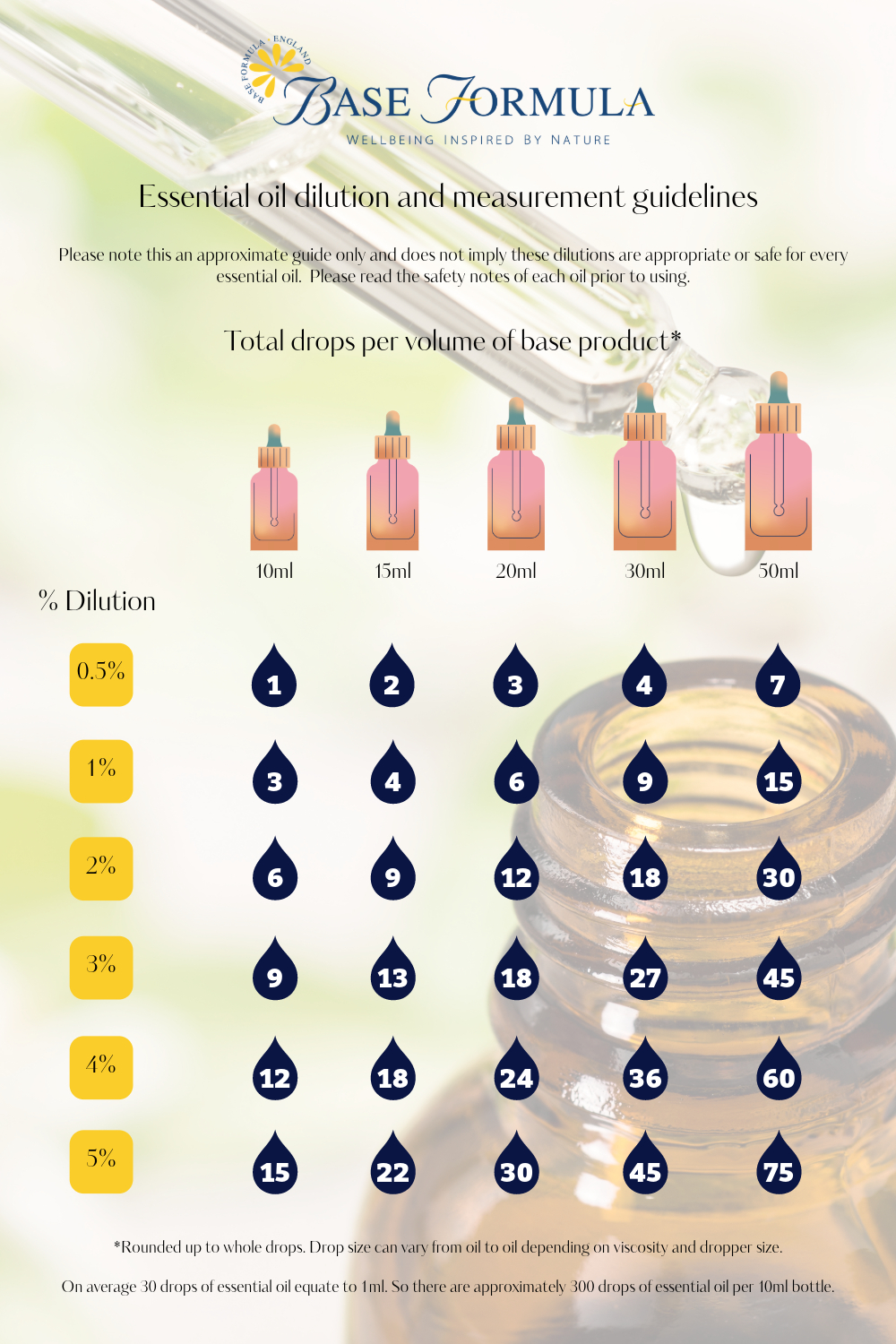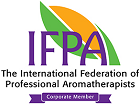Dilution ranges when applying essential oils to the skin
Importance of dilution
Essential oils are highly concentrated, powerful substances that should NOT be applied neat to the skin. The only exception to this rule would be the application of tiny amounts of Tea Tree or Lavender to grazes, cuts, burns, insect bites or stings. For any other purpose all essential oils should be diluted in an appropriate carrier oil or base product prior to use on the skin. This helps avoid any potential adverse effects such as skin irritations and allergic or phototoxic reactions.
To use essential oils safely on the skin it is vital to understand the importance of dilution in order to maximise the therapeutic benefits of the oils whilst minimising any risk. Obviously the higher the concentration of essential oil in a blend, the higher the risk of adverse reactions.
There are general dilution ranges that are recommended as safe and effective for different applications (adapted from Tisserand). These are detailed in the table below:
| Application | Dilution range | Common % used |
| For sensitive or impaired skin | 0.2-1% | 0.5% |
| Facial skincare or deodorants | 0.5-1.2% | 1% |
| Body oils and lotions | 1-3% | 2% |
| Bath and shower products (wash-off) | 2-4% | 3% |
| Wound healing and acne* | 2-10% | 4% |
| Pain and pulse point rollers** | 3-10% | 5% |
* Assumes short-term targeted application.
** Up to 10% may be required for musculoskeletal pain. Adjust up or down as needed. The dilution rate for pulse point rollers is based on the assumption that they are only applied to a very small area of skin.
It is important to note that using higher concentrations of essential oil will always increase risk, but may not increase therapeutic benefits, which will plateau at a certain level. We advise starting with a lower dilution and increasing if required.
NOTES:
The above table applies only to essential oils that do not carry specific risks or restrictions. Always read the safety notes on each oil prior to use.
Please also be aware that these dilution ranges apply to blends being used for professional treatments following a consultation, or for personal use at home. Any product that is intended to be sold to the general public, that comes into direct contact with the skin, is legally required to have a Cosmetic Product Safety Report (CPSR) for which different dilution rates apply. For any leave-on product the maximum dilution is 1% and 2% for wash-off products.
Essential oil dilution and measurement
When making up larger volumes of blends it is easier to accurately measure the correct amount of essential oil to include. For instance if you were making up 100ml of massage oil at 2% dilution you would need to add 2ml total of essential oils. These can be accurately measured out with one of our Graduated Pipettes (available in 3ml and 5ml sizes). However, for smaller quantities or ease of use, we often get asked how many 'drops' of essential oil are in 1ml or how many drops to use in say 10ml or 15ml of carrier.
Drop size can obviously vary between different oils due to viscosity of the oil and also the size of the dropper. Previous research has shown that there are between 20 and 40 drops of essential oil in 1ml (Svoboda et al 2001 and Olleveant et al 1999). Using an average of 30 drops per ml you can then use our dilution chart and follow the measurement guidelines below:





